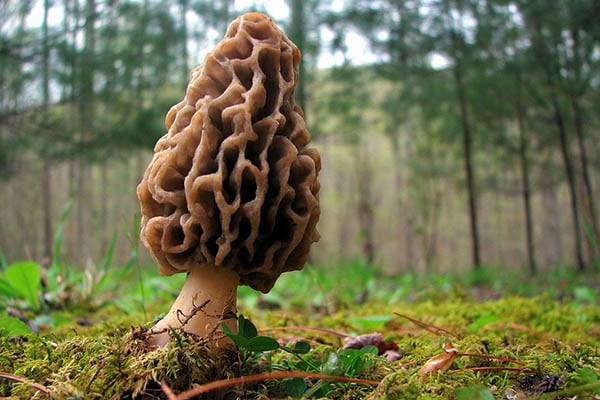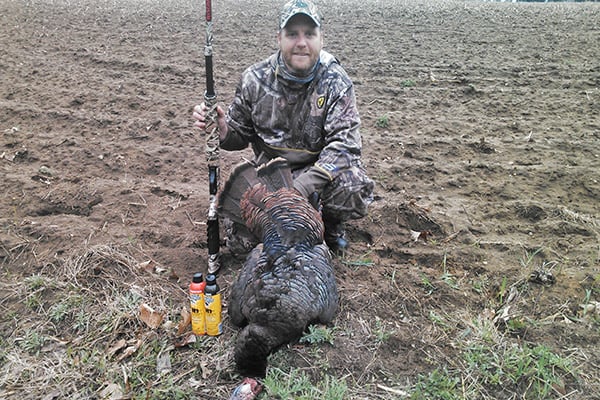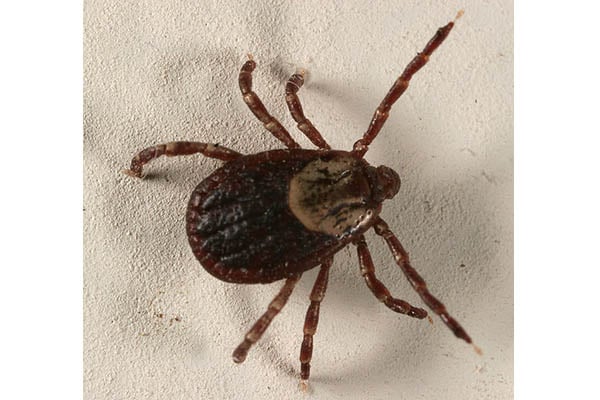Last Updated on
By David Link
As a kid, I always looked forward to spring. The dormant forests of the Midwest suddenly came alive with new green buds and shoots, and the temperatures were pleasant, but the stiffing humidity hadn’t quite hit yet. The itch to hike and play in the woods would strike me again, and a special prize could be found hiding under the new green leaves of the forest: morel mushrooms. I think I particularly loved morel hunting because I could do it independently. I didn’t have to wait for Dad to get guns out of the gun safe or anything like that. I could just put on some boots or tennis shoes (depending on how wet the spring was), grab a jacket and head out into the woods adjacent to our back yard. I knew those woods like the back of my hand as a kid, and I would head straight to the areas where I thought morels could be found.
There were some years where the morels seemed to hide better than others. I would find a couple, and that would be it. But then there were those years where I stumbled upon a big patch of them, and the sheer joy of picking morel after morel was unlike anything else. There was also pleasure in the wild foraging aspect of morel hunting. You didn’t have to grow or shop for these tasty morels. They were out in the forest for the taking as long as you looked hard enough. True to Midwestern fare, the best way to cook them was to bread them and fry them, and they beat the taste of any other dish at that time of the year.
These days I prefer morel risotto over fried morels, although last year I did bread and fry morels in almond flour, and they were, as you would expect, as tasty as ever. Hopefully this year we can share some morel recipes with you, but for now, we need to get our hands on some of these illusive mushrooms. Here are some tips on finding and identifying morel mushrooms.
Morel Varieties
The real blessing of morel mushrooms is that they are pretty hard to confuse with other mushrooms. Morels have a wrinkled, triangular shaped cap, and they have hollow insides. There are three main varieties to be found in the US. The first is the early arrival, black morels, and they are small and have a darker, black coloring.
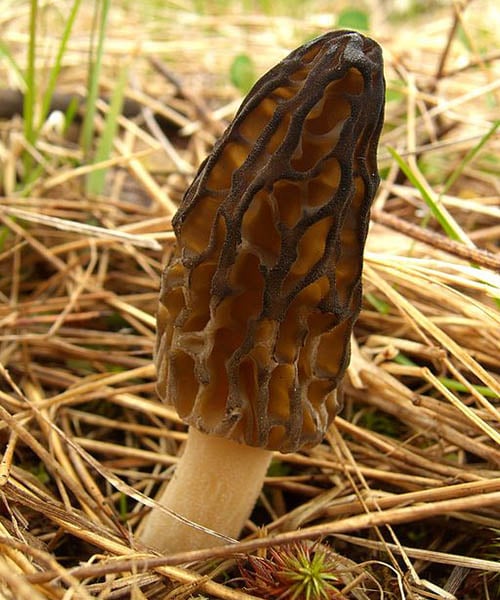
As the spring gets warmer, two other larger varieties can be found: yellow and grey morels. Some areas of the country don’t have a lot of black morels, and yellow or grey morels are the only varieties to be found. For example, I mostly found yellow morels when hunting in the Midwest. Occasionally, a yellow or grey morel can grow to a remarkable size, and should you find one, make sure to take a photo of it before you pluck it. Large morels don’t come along very often, and finding one in the wild is an event to be celebrated.
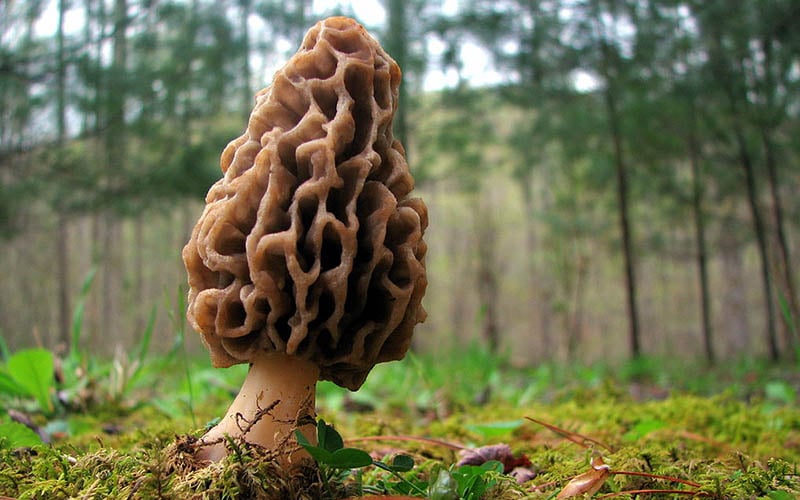
There is one particular mushroom species to look out for in the false morel. This look-alike has a similar wrinkled top and stem that can be easily confused with edible morels, but they can be distinguished from black, yellow or grey morels because they have solid stems and insides instead of a hollow structure. Exercise caution and never eat a mushroom that looks like a morel but has solid insides. Some mushroom hunters swear false morels are edible if properly prepared, but not enough research exists on the topic, and it’s simply not worth the risk.
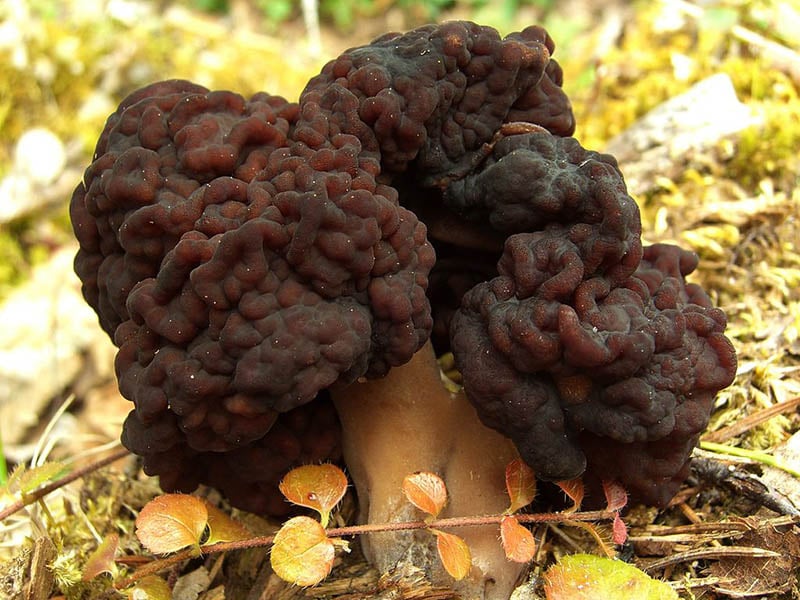
Where They Grow
Morel season begins in mid-March and typically runs through mid-May, but this depends on where you live. They are generally found growing close to nearby trees, and this will be your biggest hint during any morel hunting session. Those who have a keen eye for tree species can use this knowledge to narrow their search. Trees like ash, elm, oak, and sycamore have all been linked to morel mushrooms, but honestly I’ve never paid too close of attention to the tree species, namely because you end up with your head pointed up at nearby trees and not pointed down at the ground like it should be. That said, fruit trees are great places to find morels, and they are the exception here because they are easier to identify. However, you won’t typically find many fruit trees in your local forest, and there’s a better way to hunt instead of worrying too much about tree identification.
The key I always use for morel hunting is locating dead trees where chunks of bark have fallen on the ground. Usually these are larger trees, and this is the place to start your search, but there are other conditions to look for in conjunction with dead trees as. Warm, wet and shaded slopes can be a good breeding ground for morels, and nearby creek or river beds are a great place for morels to grow as well. As the season progresses and the weather warms up, switch your search to areas that are cooler and shaded from the hotter spring sun.
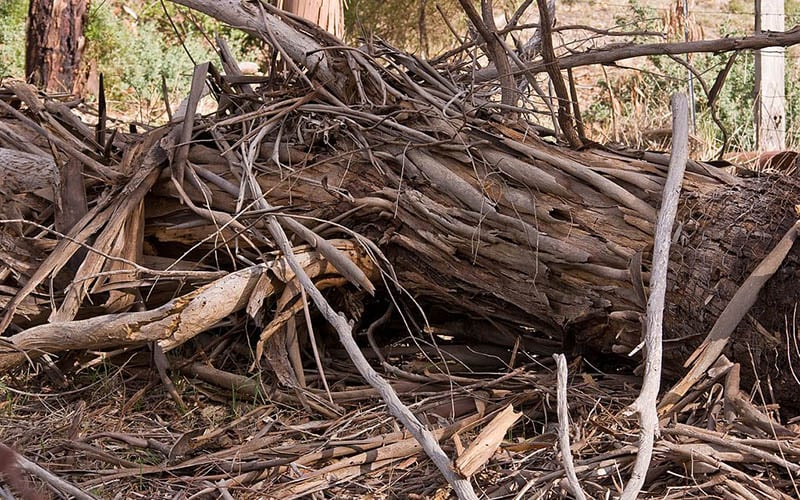
Fallen bark is just a clue, and sometimes the morels can grow several feet away from a dead tree. You’ll have the best luck visualizing where the spores might fall. The best haul of morels I ever found was 10 – 15 feet from a dead tree down a wet hillside. The hillside was covered with taller green vegetation, and a bounty of yellow morels were hiding below. My best interpretation of the growth was that the morel spores began near the dead tree, but wind (or water) carried them down the hillside to a place that created the perfect growing ground.
There’s no set rule to morel hunting, and part of the fun is realizing that morels are a bit mysterious in their growth patterns. That said, if you find a single morel sticking out of the ground, slow your search and look carefully in the nearby area. Many times there will be others growing nearby, but even that isn’t a given. There have been times I’ve found a single morel and there has been nothing else remotely nearby.
One other thing, a good morel patch this year may end up being a fruitful patch next year, but you can’t count on that either. Conditions and growth cycles change, and as I said, morel growth is mysterious. Still if you find a motherload of morels one year, it’s certainly worth checking it again next year…just don’t tell anyone about your secret spot!
Cleaning Morels
If you get lucky in your search, congratulations on your haul of tasty morels. Even if you’ve only found two or three, make sure to prepare these little beauties just like if you had found a bag full. The preciousness of this delicacy makes it all the more enjoyable. The last step in any morel hunt is to clean the mushrooms. Since morels are hollow, you should first submerge them in water to help clear the mushrooms of insects still hiding inside. Once they’ve been submerged for a while, remove them and cut them in half. This is a good last minute check that you don’t have any false morels, and you can make sure all the bugs are gone. Once cut in half, give them one more rinse and dry them before preparing. You can store extra mushrooms in the fridge for a few days in a plastic bag. Add a wet paper towel to keep them from drying out too quickly. That said, don’t wait too long, enjoy these babies while they are fresh!
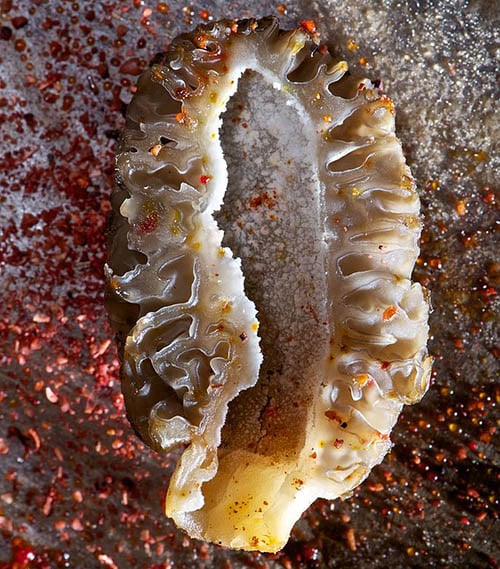
Note: I don’t have to tell you that eating wild mushrooms can be very dangerous. This is just an intro guide to finding wild morels, and I recommend that you seek expert advice anytime you’re uncertain about what mushrooms you’ve picked. Be absolutely sure you’ve picked the right mushrooms as any mistakes can be fatal. This article is not meant to be a comprehensive guide, and as with any wild edible, looking in a book or reading an article is not enough. You need an experienced guide to help you identify the wild edible in person, and we condone eating no wild edibles until you’ve been shown what is safe by a qualified source in person.
Images one, two and thumb, three, four and five all courtesy of Wikimedia Commons.
